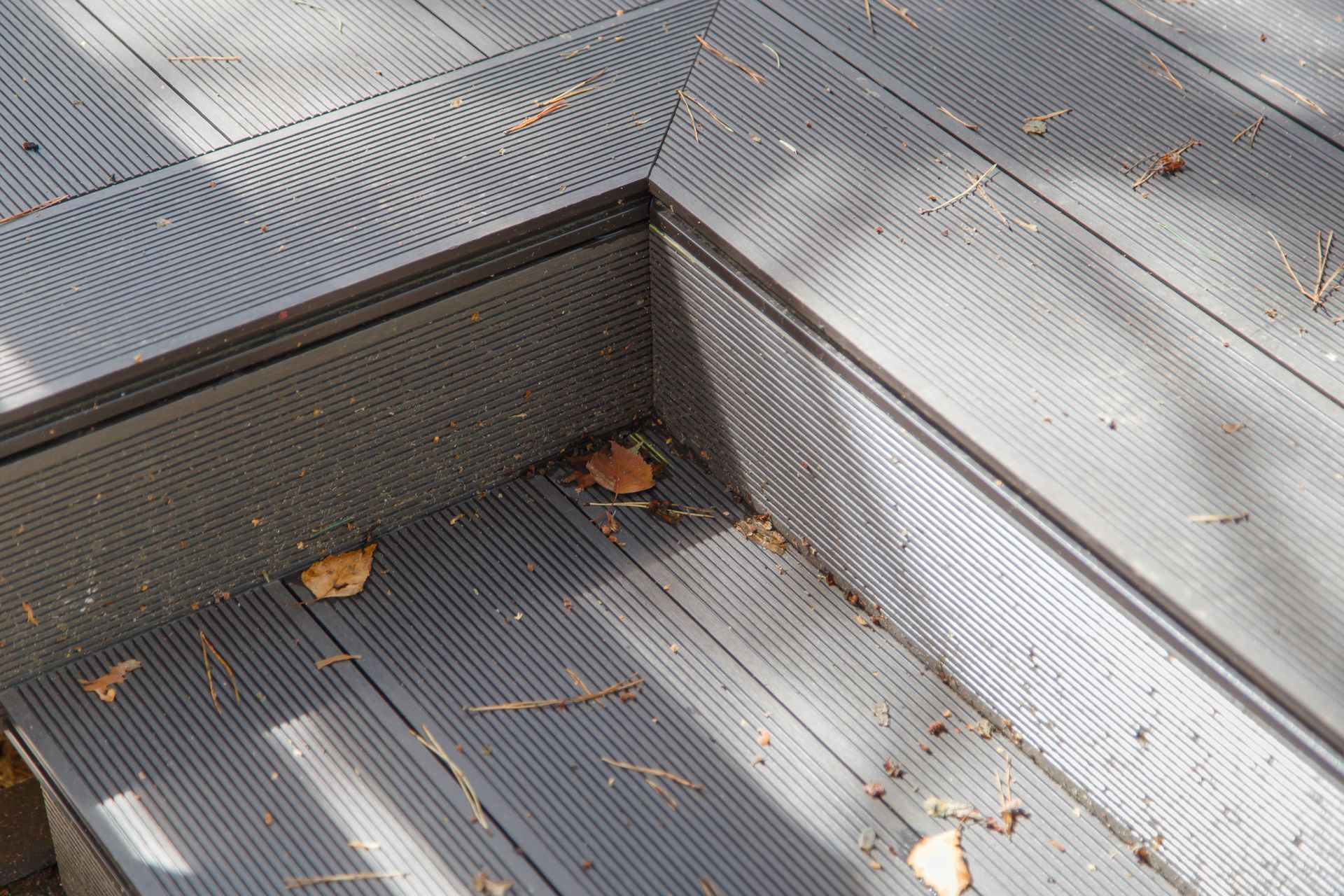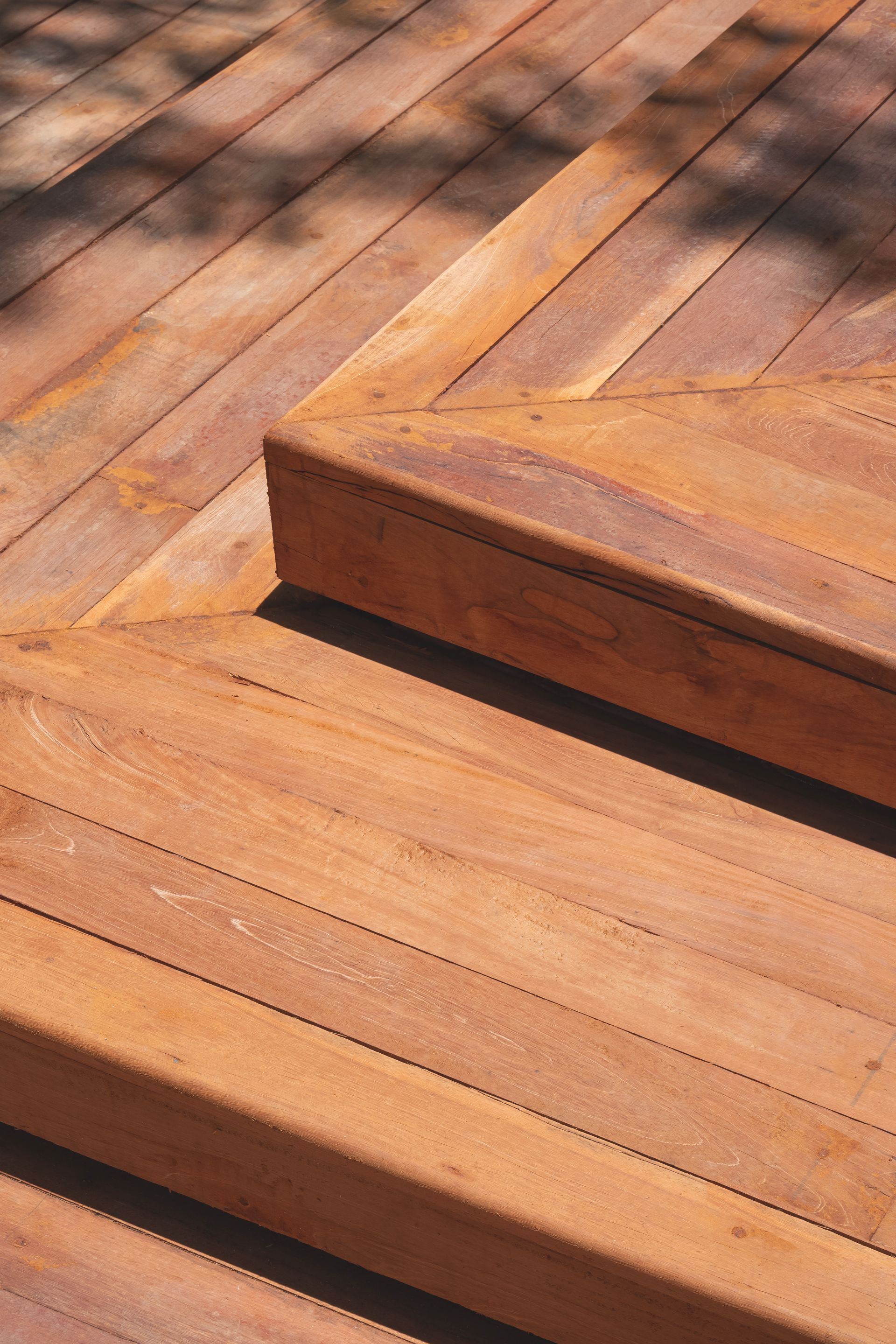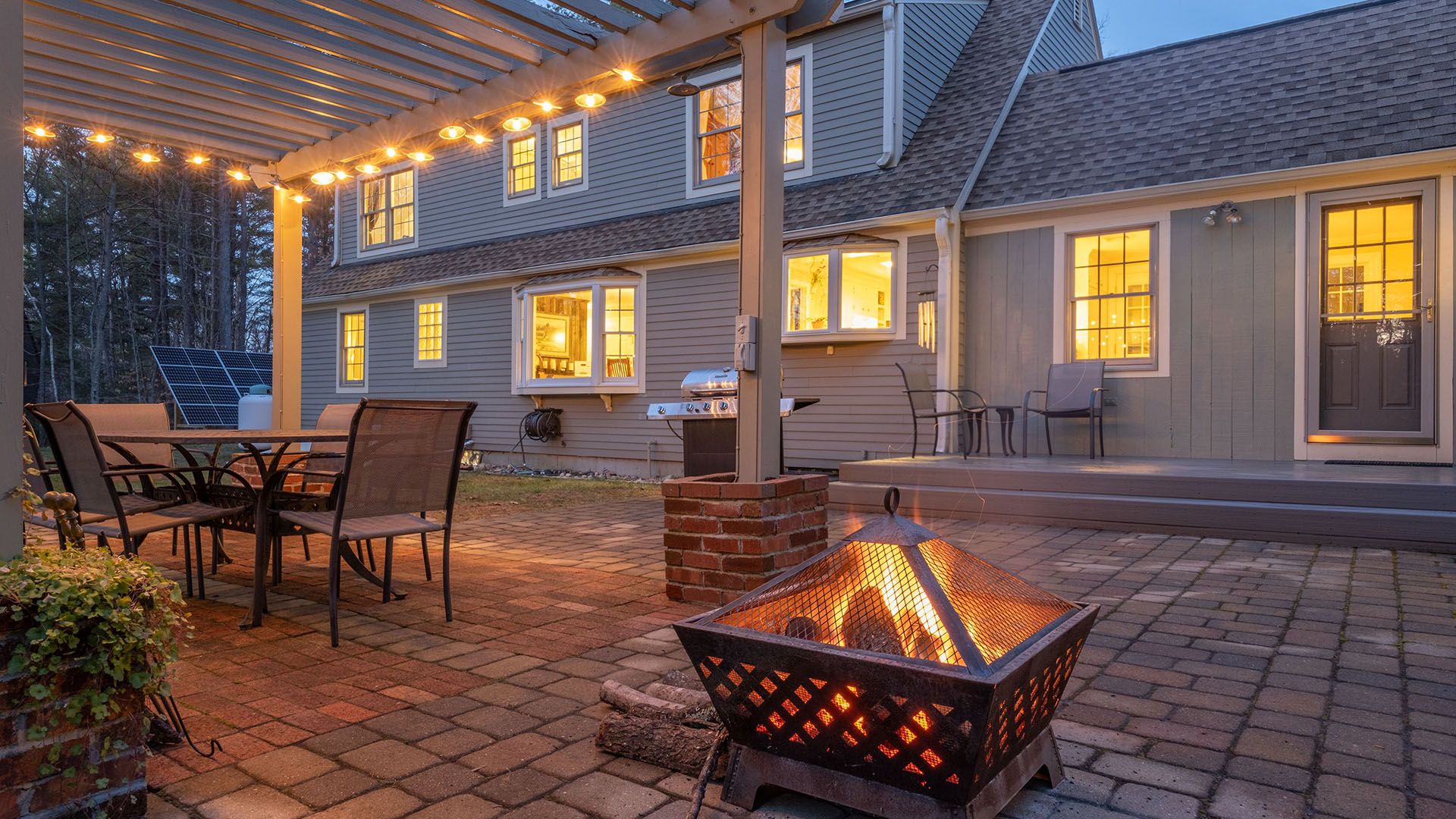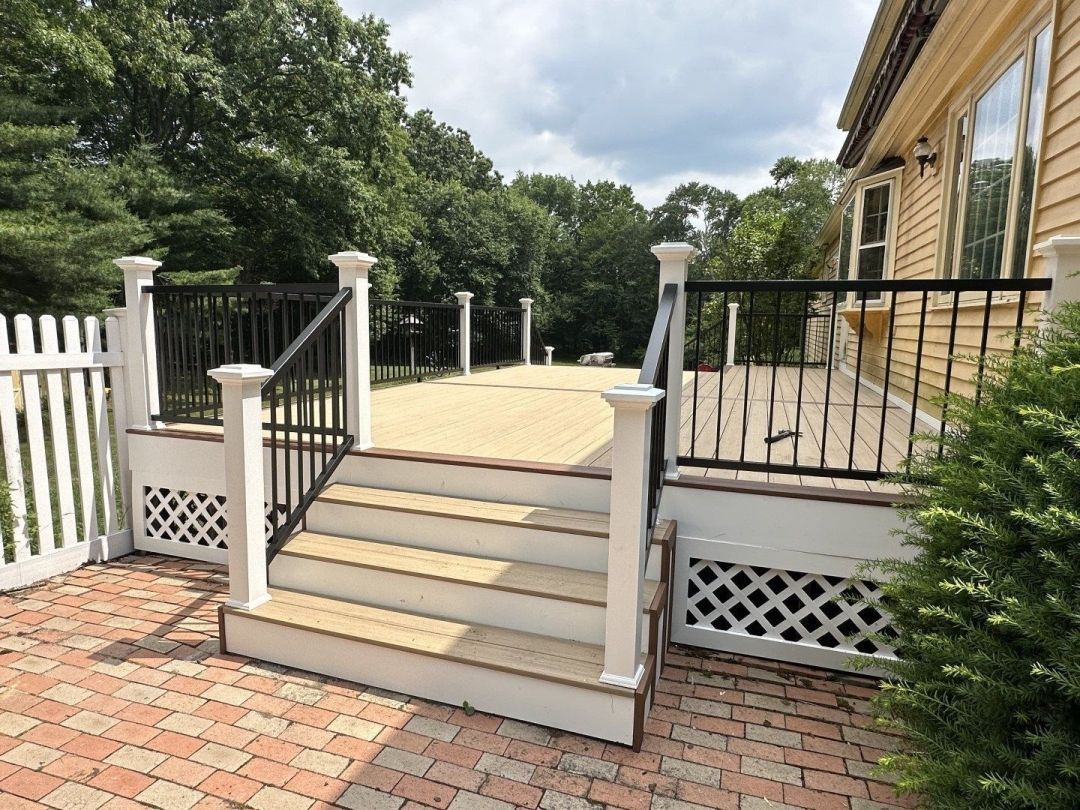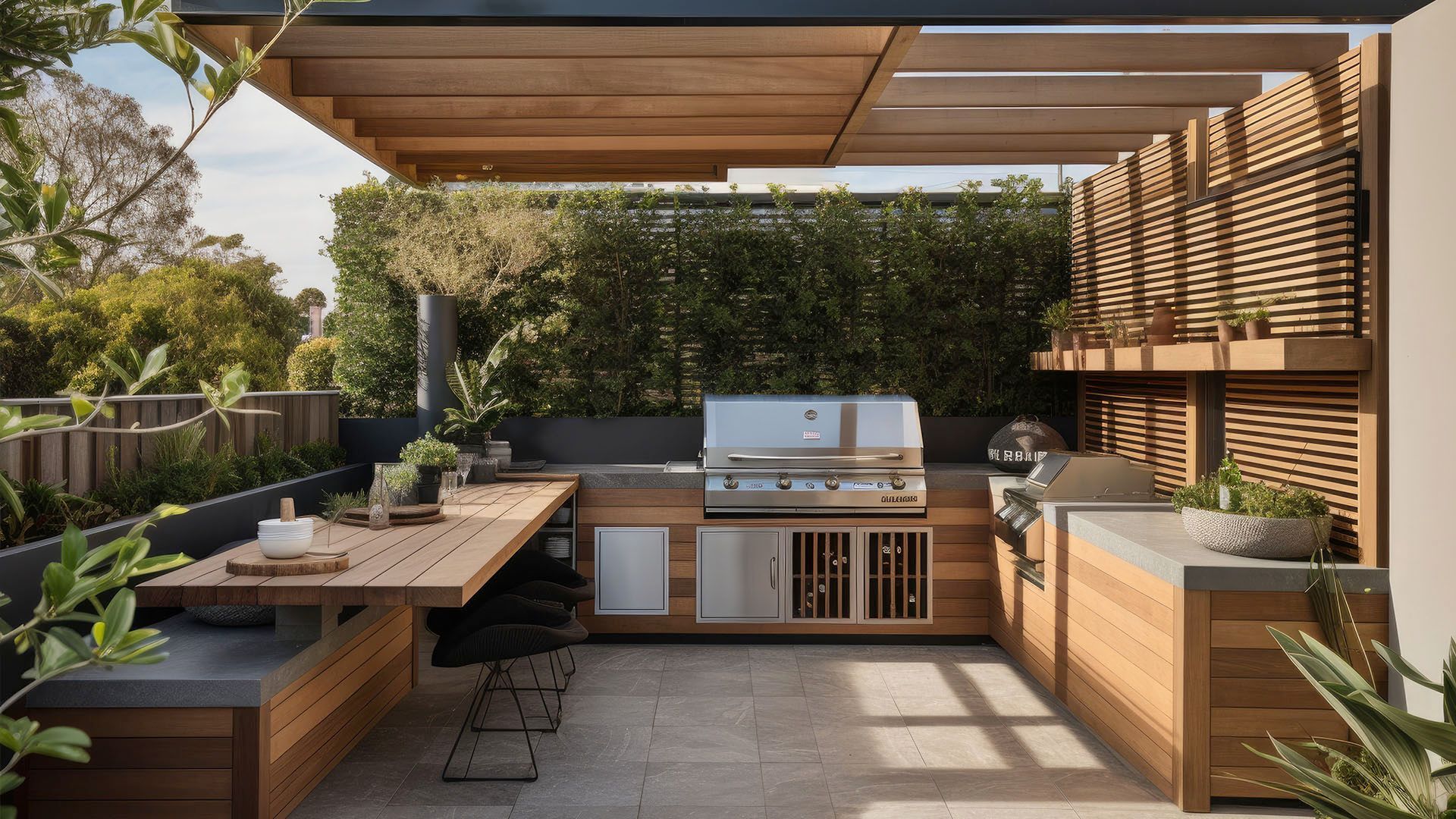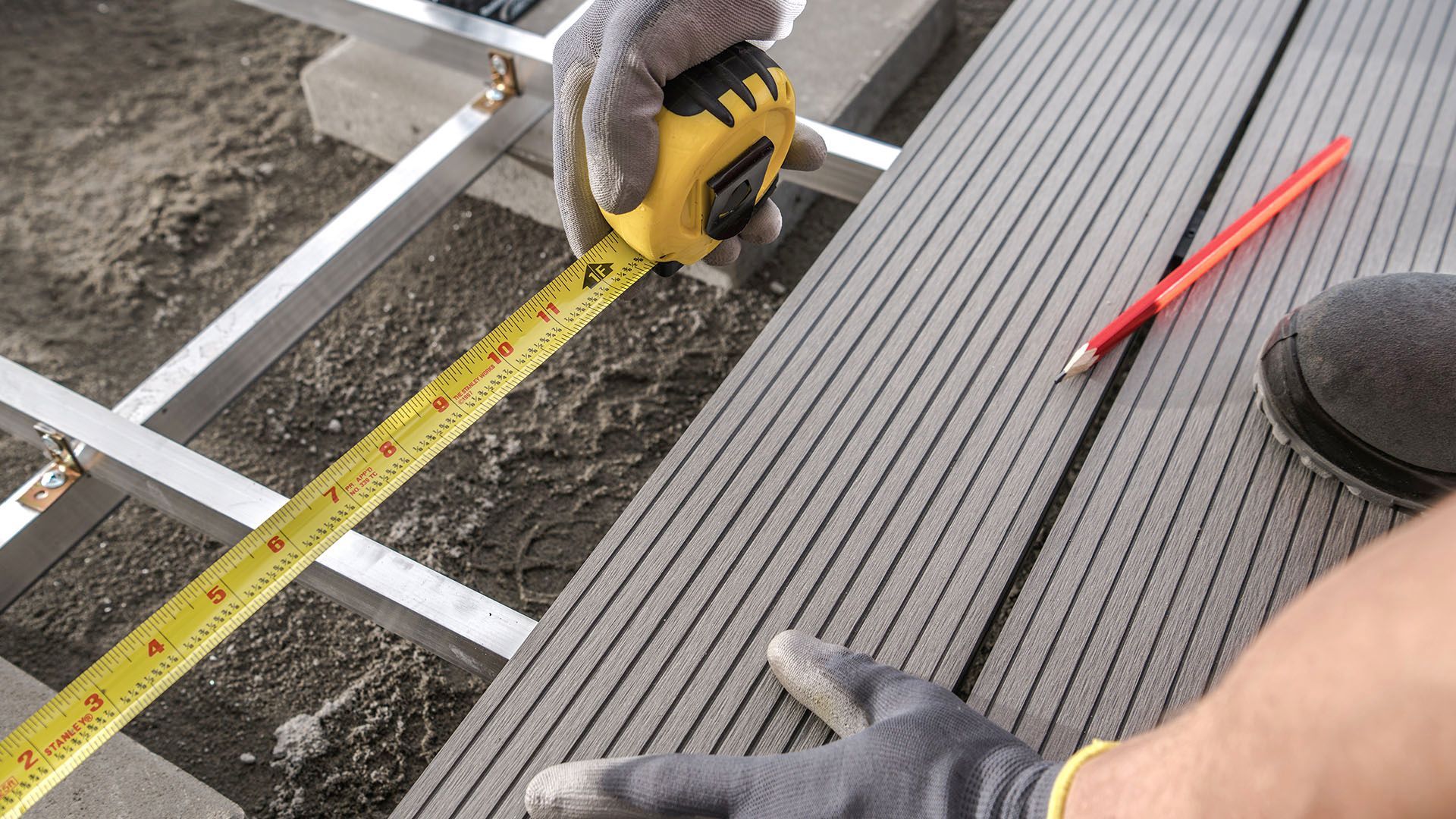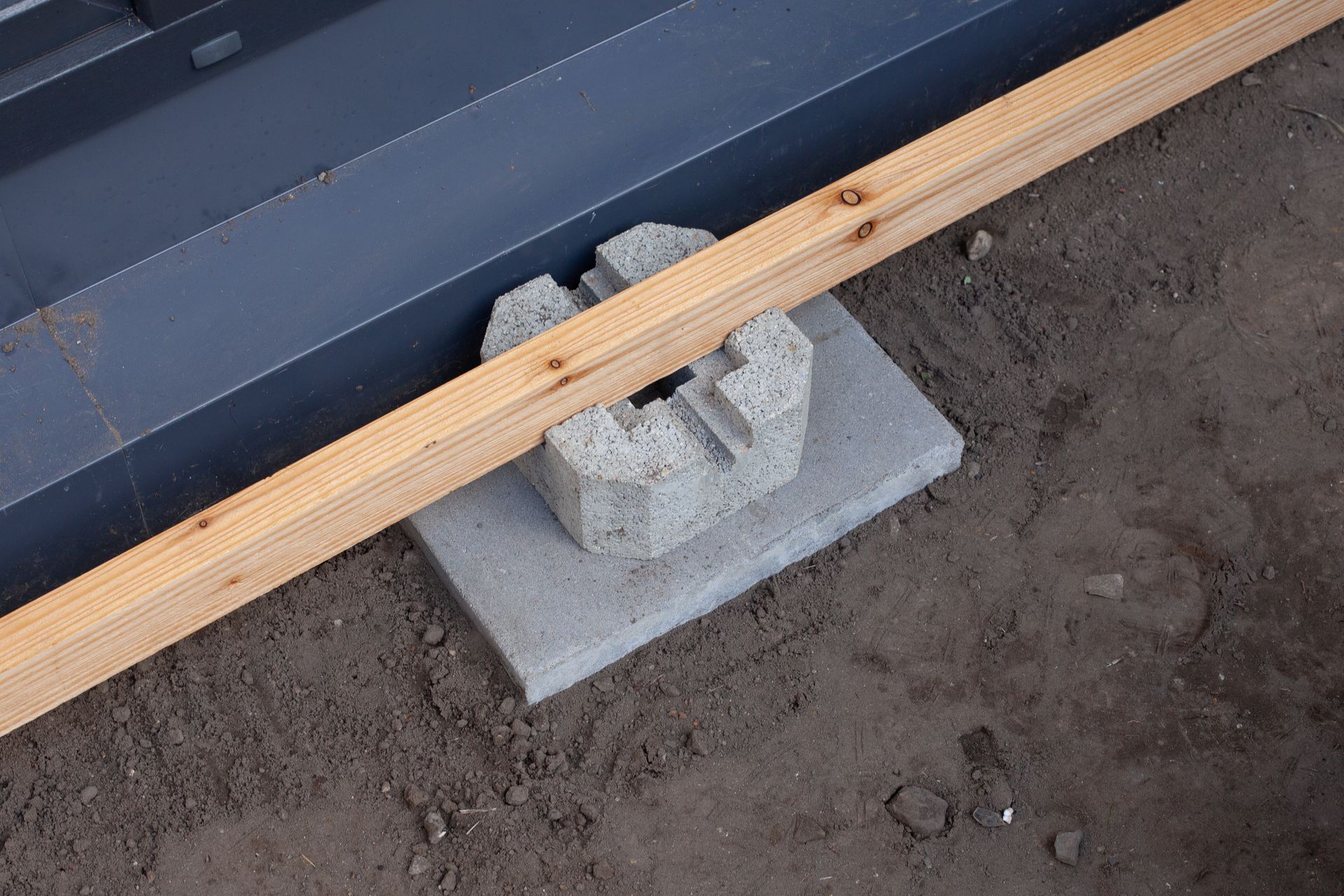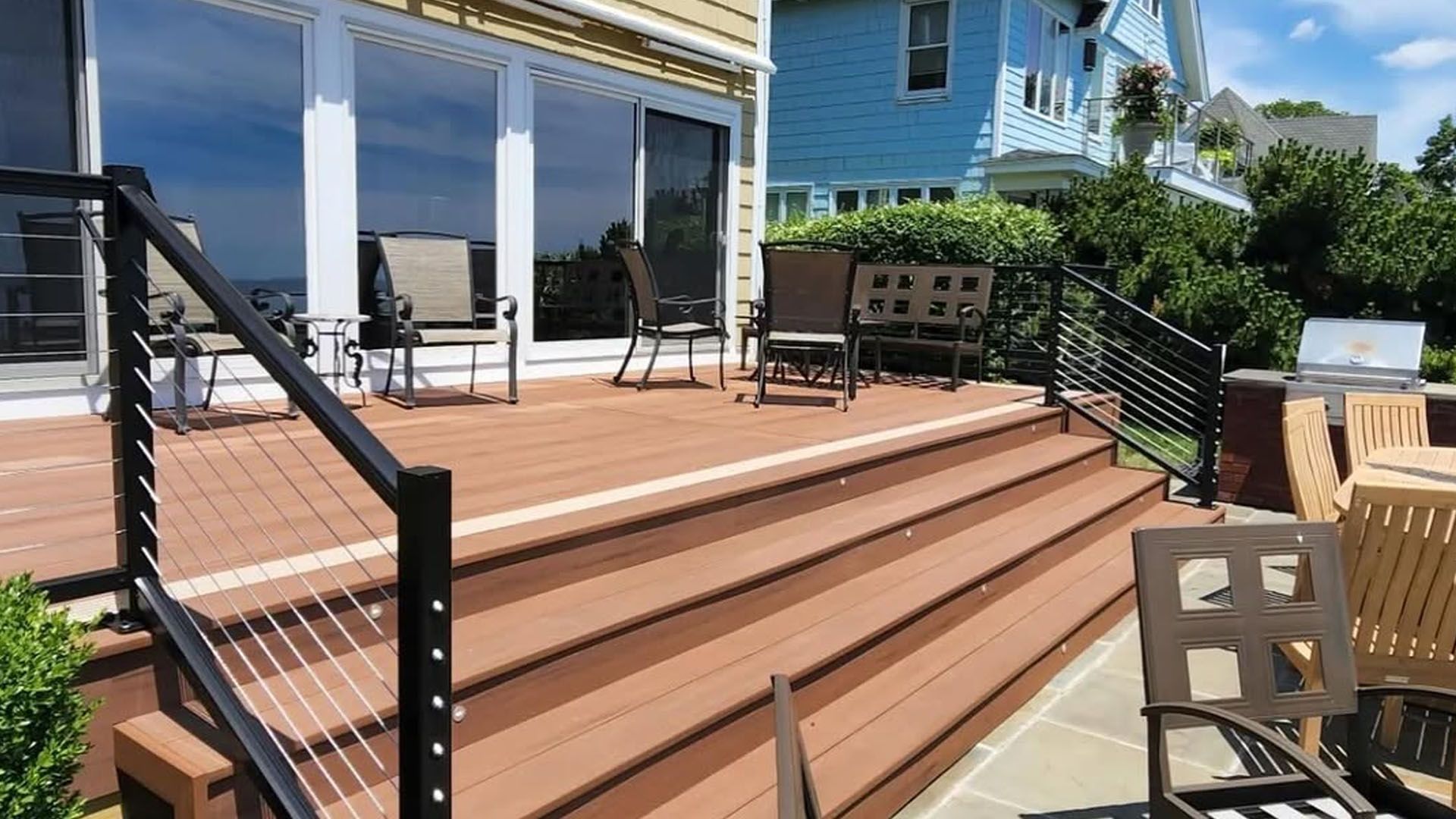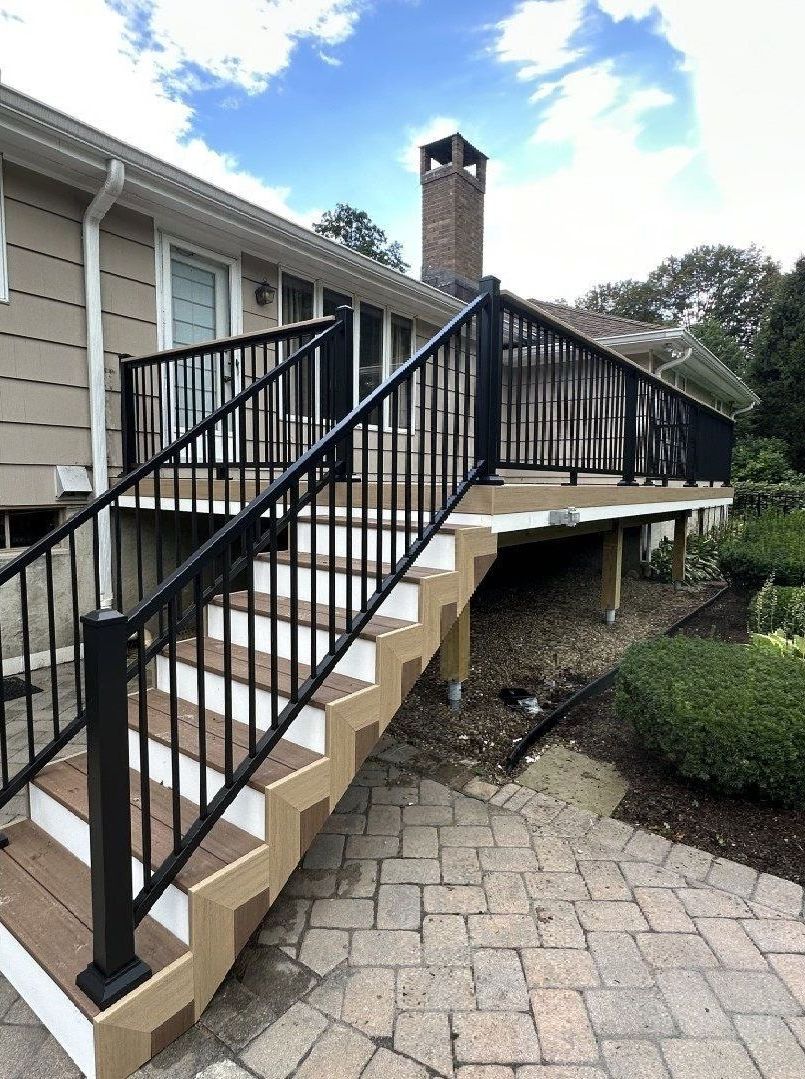How Long Does a Deck Last? Wood vs. Composite
Outdoor Space Builders designs and builds high-end decks across Connecticut using premium materials (TimberTech®/AZEK®, exotic woods) and in-house craftsmanship. Our crew handles advanced details heat-bent borders, alternative/metal framing, helical pile footings, Feeney® cable railing and we back our work with a 1-year workmanship warranty plus TimberTech's 7-year labor warranty on eligible installs. This guide gives straight answers first, then explains what affects deck lifespan so you can make a smart choice.
Quick Answer: Deck Lifespan at a Glance
Typical ranges by surface material (with proper installation and care):
- Pressure-treated pine: ~10–15 years (20 with diligent maintenance)
- Cedar / Redwood: ~15–20 years
- Tropical hardwoods (e.g., ipe, cumaru): ~25–40+ years
- Composite (capped): commonly 25–30+ years; brand warranties often 25–50 years
- PVC decking: commonly 25–30+ years; brand warranties often 25–50 years
What “lifespan” really means:
Your deck has two parts
surface (deck boards + railings) and
structure (posts, beams, joists, footings). Boards can outlast framing or vice-versa. Warranties cover materials under certain conditions, but real-world life also depends on climate, installation quality, and maintenance.
What Affects Deck Lifespan
Material & Build Quality
- Capped composite vs. uncapped: Capped boards resist moisture, staining, and UV better.
- PVC: Excellent moisture resistance; manage thermal movement with proper gapping.
- Wood species/grade: Higher-grade cedar/redwood and dense hardwoods last longer.
- Hardware & fasteners: Stainless or coated screws and hidden fasteners reduce corrosion and water intrusion.
Structure & Installation
- Framing species & spacing: Correct joist spacing, proper beam sizing, and straight, dry lumber matter.
- Flashing & waterproofing: Ledger flashing, beam/joist caps, and
joist protection tape prevent rot.
- Footings & foundations: Helical piles or properly poured footings keep the frame stable and dry.
Climate & Exposure (Connecticut realities)
- Sun/UV: Causes fading and surface wear; shade helps, as does capped technology.
- Moisture & freeze-thaw: Trap water and you invite rot; promote airflow under the deck.
- Coastal salt air & humidity: Accelerate corrosion use stainless hardware and quality flashing.
Use & Maintenance
- Foot traffic, pets, furniture: Adds wear; use protective pads under furniture.
- Cleaning schedule: Gentle wash keeps mold/mildew from holding moisture.
- Finish cycles (for wood): Consistent sealing/staining extends life.
Lifespan by Deck Type
Pressure-Treated Pine
- Pros: Most affordable, easy to repair.
- Care: Annual wash; seal or stain every 1–2 years.
- Expect: ~10–15 years; up to ~20 with vigilant upkeep.
Cedar & Redwood
- Pros: Natural rot resistance, warm look.
- Care: Gentle cleaning; re-seal on a set cadence.
- Expect: ~15–20 years.
Tropical Hardwoods (Ipe, Cumaru)
- Pros: Extremely dense and durable; premium look.
- Care: Pre-drill and use stainless fasteners; oil to maintain color.
- Expect: ~25–40+ years.
Composite Decking (Capped)
- Pros: Low maintenance; strong fade and stain resistance.
- Notes: Allow for expansion/contraction; follow brand fastening specs.
- Expect: 25–30+ years with many products warrantied 25–50 years.
PVC Decking
- Pros: Top-tier moisture resistance; great for wet areas.
- Notes: Manage thermal movement with proper gapping.
- Expect:
25–30+ years with long material warranties common.
Aluminum & Alternatives
- Pros: Very durable and fire-resistant; niche look.
- Expect: Long life with minimal upkeep, higher upfront cost.
Railings & Fasteners
- Railings: Powder-coated aluminum and stainless cable systems last decades.
- Fasteners: Stainless steel or high-grade coated screws fight corrosion; hidden systems reduce water entry.
Surface vs. Substructure: How Long Each Part Lasts
- Boards (surface): Follow the ranges above by material.
- Joists/Beams/Posts (structure): Pressure-treated framing can last
20–30+ years if kept dry and protected.
- Protect the frame: Use
joist tape,
post caps, and
beam/ledger flashing to block water. Maintain clearance and
ventilation under the deck so framing dries out after storms.
Maintenance That Extends Life
- Annual inspection checklist: Wobbly rails, soft or spongy boards, rusted hardware, loose ledger, clogged gaps.
- Cleaning & mildew control: Gentle soap + water and a soft brush; avoid harsh power-washing that scars fibers.
- Sealing/staining cadence (wood): Keep water beading; re-coat when absorption starts.
- Preventive upgrades: Under-deck drainage, shade structures, skirting with venting, and snow-clearing habits that avoid gouging.
Signs It’s Time to Repair, Resurface, or Replace
- Cosmetic wear (repair): Surface scratches, minor fading, single-board replacements.
- Resurface: Frame is sound, but boards are tired install new surface over the existing structure (after inspection).
- Replace: Ledger damage, widespread rot, undersized framing, or persistent movement. Safety comes first.
Warranties vs. Real-World Performance
- Material warranties: Often cover fade, stain, or structural defects under specific conditions; they don’t replace maintenance.
- Workmanship warranties: Depend on the installer; OSB provides a
1-year workmanship warranty and installs products eligible for
TimberTech’s 7-year labor warranty when criteria are met.
Cost & Value Over Time
- Upfront vs. total cost of ownership: Wood often costs less to start but needs regular finishing;
capped composite/PVC cost more upfront but save time and money on maintenance.
- Resale & ROI: A durable, low-maintenance, great-looking deck is a strong selling point.
Codes, Permits & Safety Considerations
- Local codes & permits: Stairs, railings, and load ratings must meet current code.
- Insurance: Aging decks with structural issues can create liability; regular inspections protect people and property.
Choosing the Right Deck for Your Home
- Decision guide:
- Want low maintenance? Choose
capped composite or PVC.
- Love a natural look? Cedar, redwood, or
hardwoods deliver budget for upkeep.
- Challenging site or soil? Consider
helical pile footings for stability.
- Modern, open views?
Feeney cable railing keeps sightlines clean.
- Smart questions for your contractor:
- What materials (brand/line) and
fasteners will you use?
- How will you handle
ledger flashing,
joist protection, and
drainage/ventilation?
- What are the
warranty terms (material + labor), and how do I keep them valid?
Summary & Next Steps
- Bottom line: With proper design, installation, and care, a Connecticut deck can last
25–30+ years with composite/PVC and
15–40+ years with wood, depending on species and maintenance.
- Best move now: Book a professional inspection or design consult. We’ll assess your current structure, talk through materials, and map a plan to extend your deck’s lifespan or replace it once it’s the safer, smarter choice.
Frequently Asked Questions
Which decking material lasts the longest?
Tropical hardwoods (like ipe or cumaru) can last 25–40+ years, while capped composite and PVC commonly last 25–30+ years (many brands warranty 25–50 years). Pressure-treated pine and cedar are shorter-lived unless very well maintained.
What part of a deck usually fails first the surface or the structure?
It depends: surface boards (decking) can wear out before the frame, but frames can fail first if exposed to trapped moisture or poor flashing. Always inspect both surface and substructure.
How much does maintenance affect lifespan?
Greatly. Regular cleaning, proper sealing/staining for wood, correct flashing, and good ventilation can add years e.g., pressure-treated pine can reach ~20 years with vigilant upkeep, and composites perform best when installed and cared for per manufacturer specs.
When should I repair, resurface, or fully replace a deck?
Repair for cosmetic or single-board issues; resurface if the frame is sound but boards are tired; replace if there’s ledger damage, widespread rot, undersized framing, or structural movement. Safety is the deciding factor.
Is composite worth the higher upfront cost?
Often yes for homeowners who value low maintenance and long-term durability: composites/PVC have higher upfront costs but typically lower lifetime maintenance and strong warranties, improving total cost-of-ownership and resale appeal.

